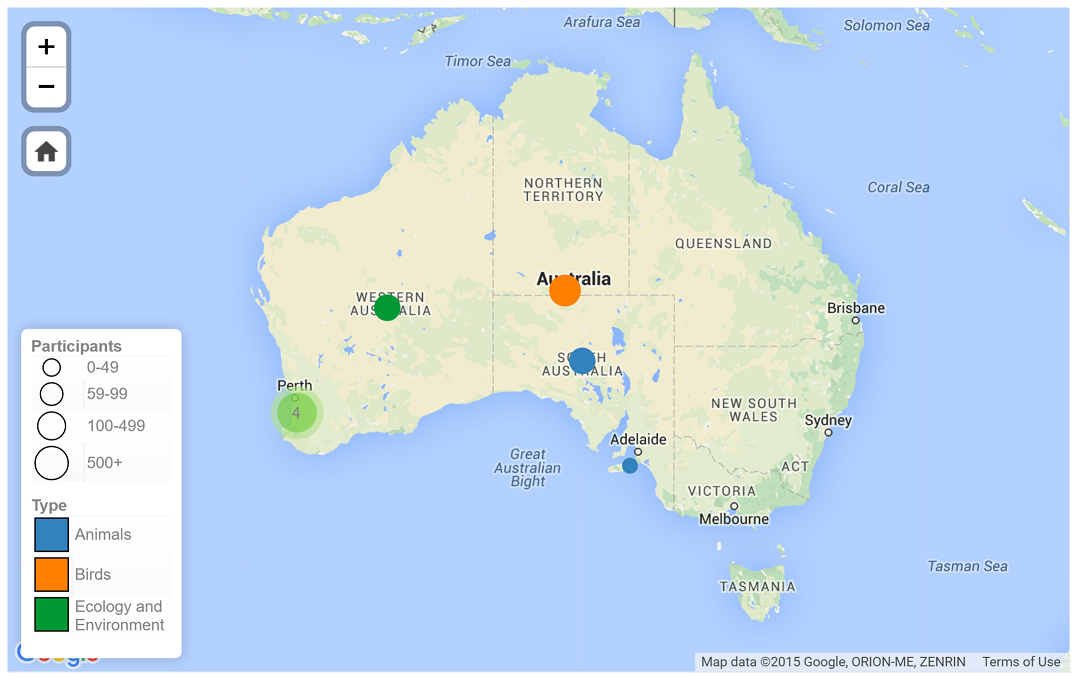We’ve recently created a citizen science project webmap on our Citizen Science Hub where people can view the current citizen science projects we support. You can access this map on our Citizen Science Hub by clicking this link, or clicking on the image below.
A screenshot of our Citizen Science Project webmap
This project webmap provides a spatial representation of the areas where these projects are focused (e.g. if it’s a state based project, the project ‘pin’ is the centre of the relevant State, or country, or even the planet), their broad topic (marine, terrestrial, or both) and a link to more information about the project. The project map complements the data map already in our Citizen Science Hub, that shows the data points collected across all our projects (which you can see underneath the Projects map, again via this link). We’re once again using our GRID system to store the locations of the projects, but this time Andrew has put together a specific Leaflet plugin in the Citizen Science Hub that will visualise the points the way that we want them to be visualised (e.g. by the category and the size components).
One aim of this was to collate data on where our Citizen Science Hub projects are located, so that we can help people to find local (or even global) citizen science projects that match their interests. Given our background of working with standards-based methods, we also wanted to document this diversity of projects using a standard, and so we used the Public Participation in Scientific Research Core (PPSR-CORE) metadata standard (which you can read more about here).
Each of the projects in our Citizen Science Hub were cataloged using the PPSR-CORE standard. However, the names for these fields aren’t really user friendly, so we’ve used aliases to display something a little more readable. For example, instead of ProjectGeospatialRange, we use “Scale”. This is something that often happens with data standards, in that colloquial names will emerge for the complex, machine readable, field names.
In the meantime, we’ll keep adding more citizen science projects to the map as we have more active participants in the Citizen Science Hub. If you are interested in participating in one of the projects, or starting your own, then contact us via the Citizen Science Hub, leave a comment below, or start a conversation with us on Facebook, Twitter or LinkedIn.
Tracey, Andrew and Alex


Comments are closed.